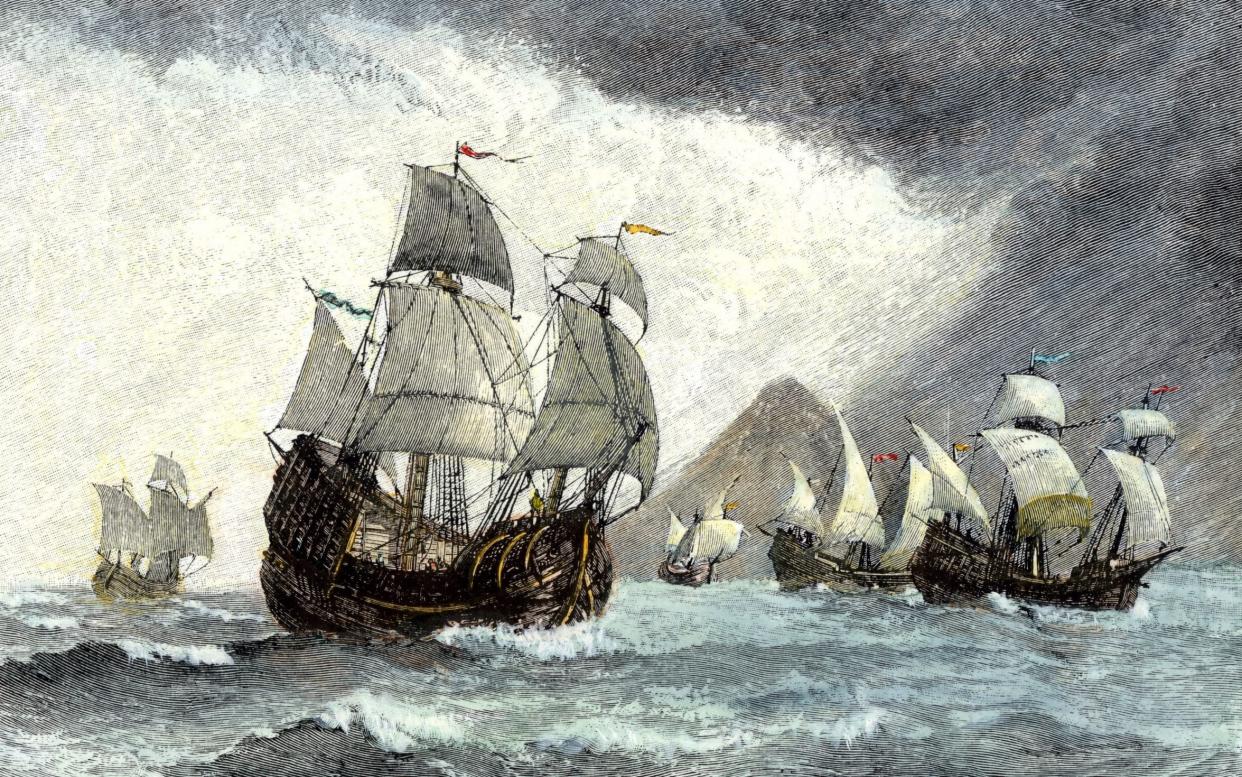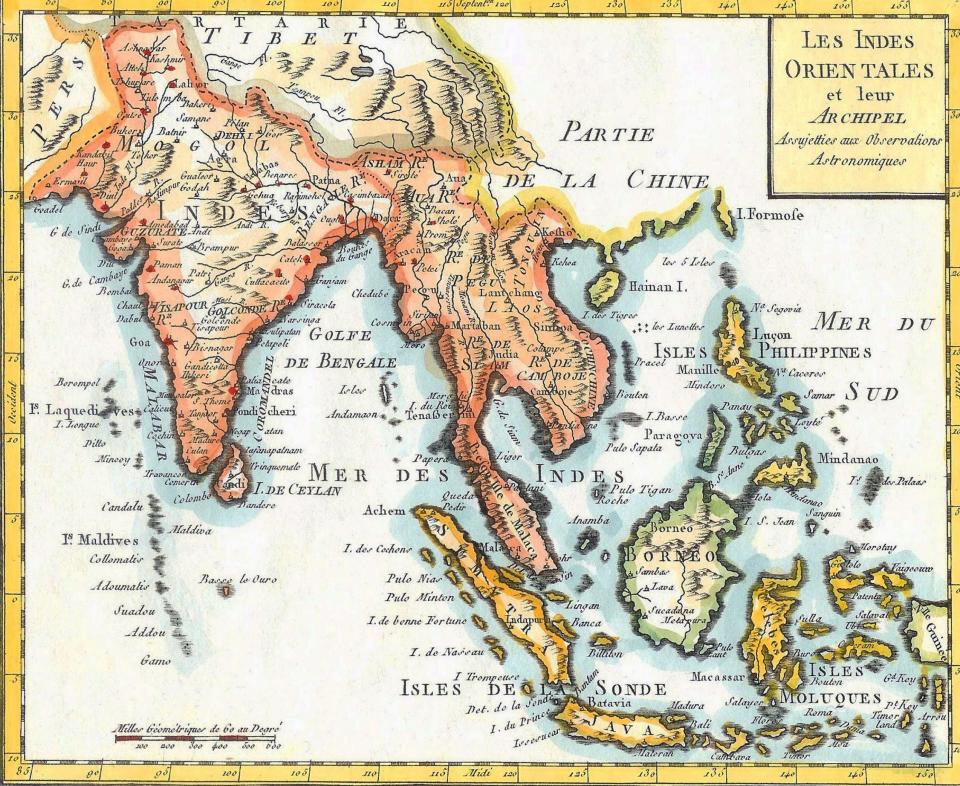How Europe’s hunger for rare spices sent Magellan to a painful death

Aboard Ferdinand Magellan’s voyage of 1519 to 1522, the greatest expedition of the Age of Discovery and the first to successfully circumnavigate the globe, was a single Englishman. Andrew of Bristol was the master gunner on the flagship, Trinidad. He made it across the newly-minted Pacific Ocean and, in doing so, unknowingly traversed the deepest part of Earth’s seas, the Mariana Trench.
Spice, by Roger Crowley, is a narrative history about discovery and long-distance trade between 1511 and 1571, primarily concerned with the contest between Spain and Portugal. Magellan had been commissioned by the Spanish crown to go in search of a new route to the Moluccas (today known as the Maluku islands of Indonesia). These were the fabled “Spice Isles”, the Early Modern world’s great source of nutmeg and cloves.
The Portuguese had found them first but, in a time before reliable maps, their location was a closely-guarded secret. The treaties of Alcáçovas and Tordesillas, drawn up between Portugal and the crowns of Castile and Aragon in the 15th century, had carved up the world. Portugal declared ownership of the Indian Ocean and much of the South Atlantic, while almost all of the American coast and the Pacific, with any new territories rumoured to exist west of that, were monopolised by the Spanish. Under this new doctrine of mare clausum (closed sea), ships entering another kingdom’s waters risked capture or destruction.
Charles V of Spain was therefore searching for a way to reach the Spice Isles while minimising the amount of time spent trespassing in hostile waters. Since the eastern route was closed, Magellan, Portuguese by birth, promised him a western one, around the tip of South America, that would allow Charles to exploit the Spice Isles under a veneer of plausible deniability. In return, Magellan was to be made as wealthy as a king, with the right to governorship of any lands discovered en route.
When the three ships remaining from Magellan’s originally five-strong fleet arrived at Guam, the southernmost island of the Marianas archipelago, they were starving and battered by disease: it had been three months and 20 days since they’d last had fresh food. The islanders rowed out to their ships but, rather than offering help, set about stripping them of valuables. At first, the sailors could do little more than look on, “almost too weak to prevent the pilfering”. Magellan would call these the “Islas de los Ladrones”: the Islands of Thieves. It was here that Andrew of Bristol succumbed to scurvy, only three weeks before the Portuguese explorer met his own fate, hacked to death on the shores of the Philippine island of Mactan.

Crowley’s prose barrels forward, which is wonderful in the early chapters, where the cast of characters is small and the stakes are obvious. Magellan’s voyage is packed with mutinies, maroonings and tense first encounters. Even in the relatively peaceful sections, he manages to capture the excitement of Europeans discovering, often for the first time, “the hitherto unimagined immensity of the planet’s oceans in all their moods”.
After Magellan’s death, the circumnavigation was completed by Juan Sebastián Elcano. It caused a major diplomatic incident when his ship limped alone into Sanlúcar in southern Spain, two years after departing, carrying a fortune in nutmeg and with only 18 of the 270-odd men who had originally embarked. Charles had triumphed, and Portugal’s most important trade monopoly had been shattered. Even worse, Spanish expansion westward had finally overlapped with the Portuguese-controlled East. Here, too, Crowley tells a fine story, capturing the shockwaves that rippled across European politics while remaining grounded in historical resources, such as the diary of Antonio Pigafetta, an Italian nobleman (and one of the lucky survivors) who chronicled the trip.
It’s after Elcano’s doomed second voyage of 1525, in which one less lucky sailor was discovered “suffocated by lice”, that Spice’s problems begin. We start to lose sight of familiar characters and, as the horizons of European imperial ambition expand, the scope of the narrative also starts to broaden uncontrollably. The history remains genuinely compelling, with the focus on the battle for control of the Moluccas punctuated by interludes in which the Portuguese make early trading efforts in China, and the English attempt to go over the top of Russia to cut their own path to the isles. In both cases, though, the real interest comes from how their original mission to discover new spice-routes is dwarfed by the immensity of what they find.

The Portuguese, for instance, were amazed by the wealth and complexity of the new civilisation that they had encountered, a place where they “squander gold leaf and silk”. Through a mixture of arrogance and bad luck, they offended their hosts by trying to establish a fort. Many were executed as barbarians, and the remainder held hostage by an entirely unsympathetic Jiajing emperor. Meanwhile, the Englishman Richard Chancellor took his expedition as far as Archangel before the ice locked them in. News of exotic strangers in a northern port caught the attention of Ivan the Terrible, and Chancellor became the first Englishman to travel to Moscow, returning safely to England and founding the Muscovy Company in 1555.
While the huge mark-up available for spice traders at the start of the 16th century provided plenty of incentive to “weave the oceans together”, global trade saw booms in a host of other valuable commodities including ivory, gemstones and silver. In one late chapter, we learn about forced labour at the Bolivian silver mine of Potosi – the “mountain that eats men” – a portend of the large-scale colonial exploitation soon to come. Each of the episodes Crowley covers are fascinating stories, drenched in gothic detail and pushed through with frenetic energy, but Spice is overstuffed with them, and they blend together into a slightly over-seasoned collection.
Spice is published by Yale at £20. To order your copy for £16.99, call 0808 196 6794 or visit Telegraph Books

